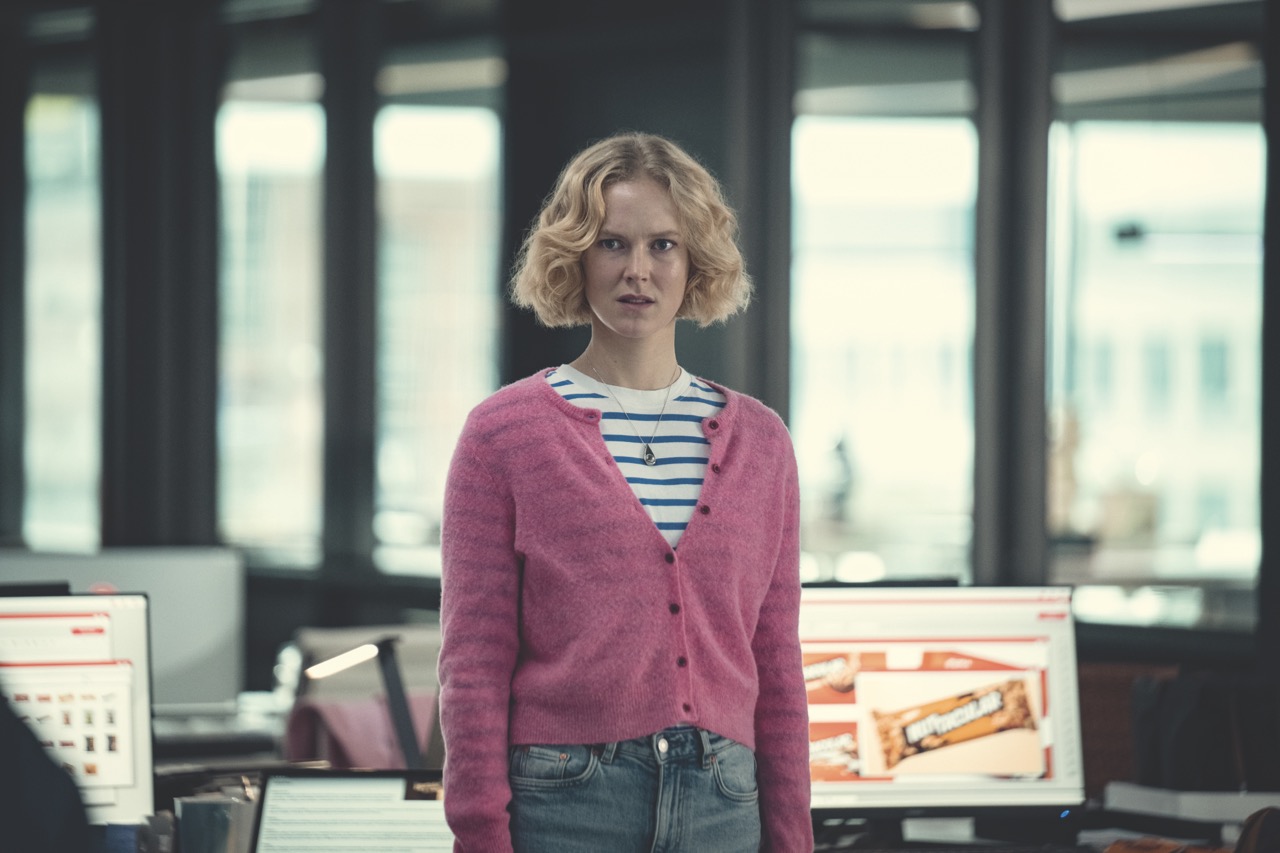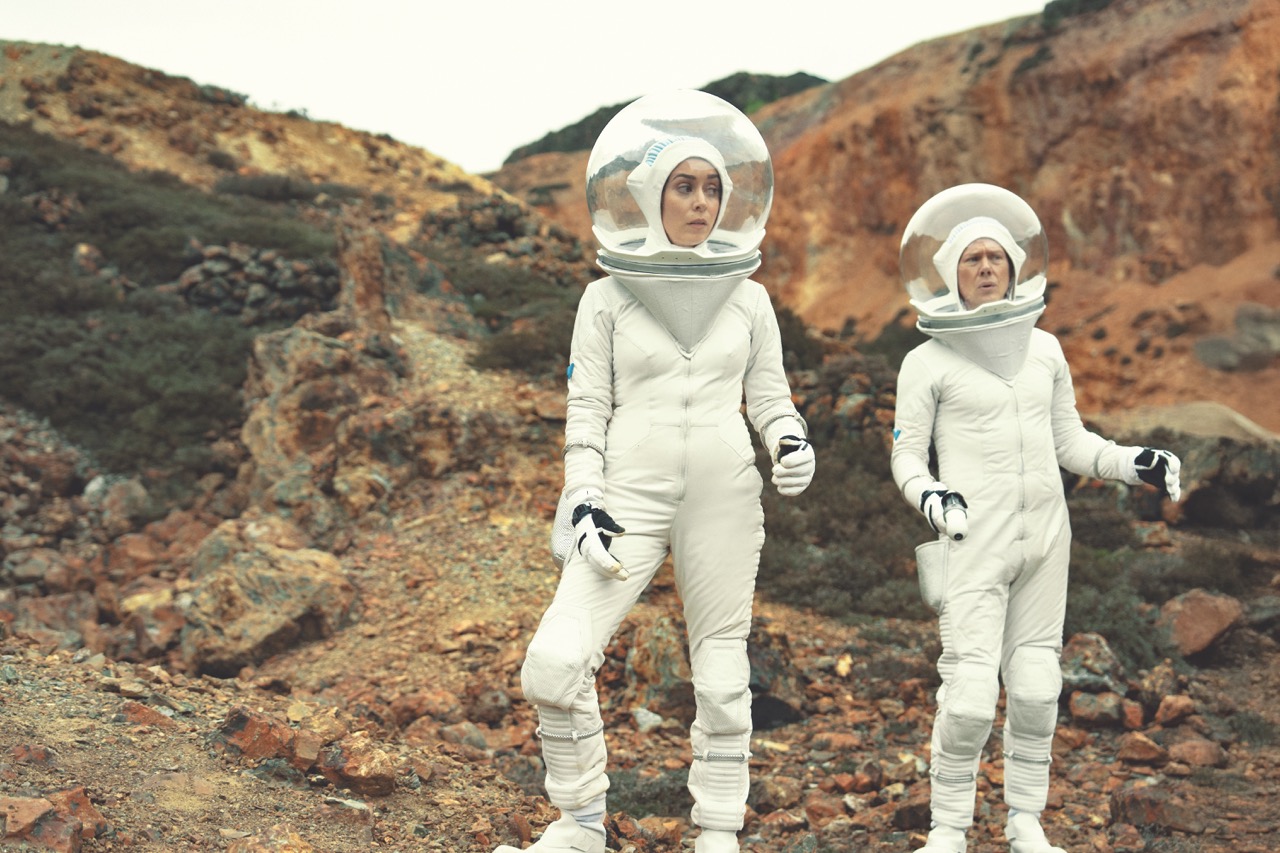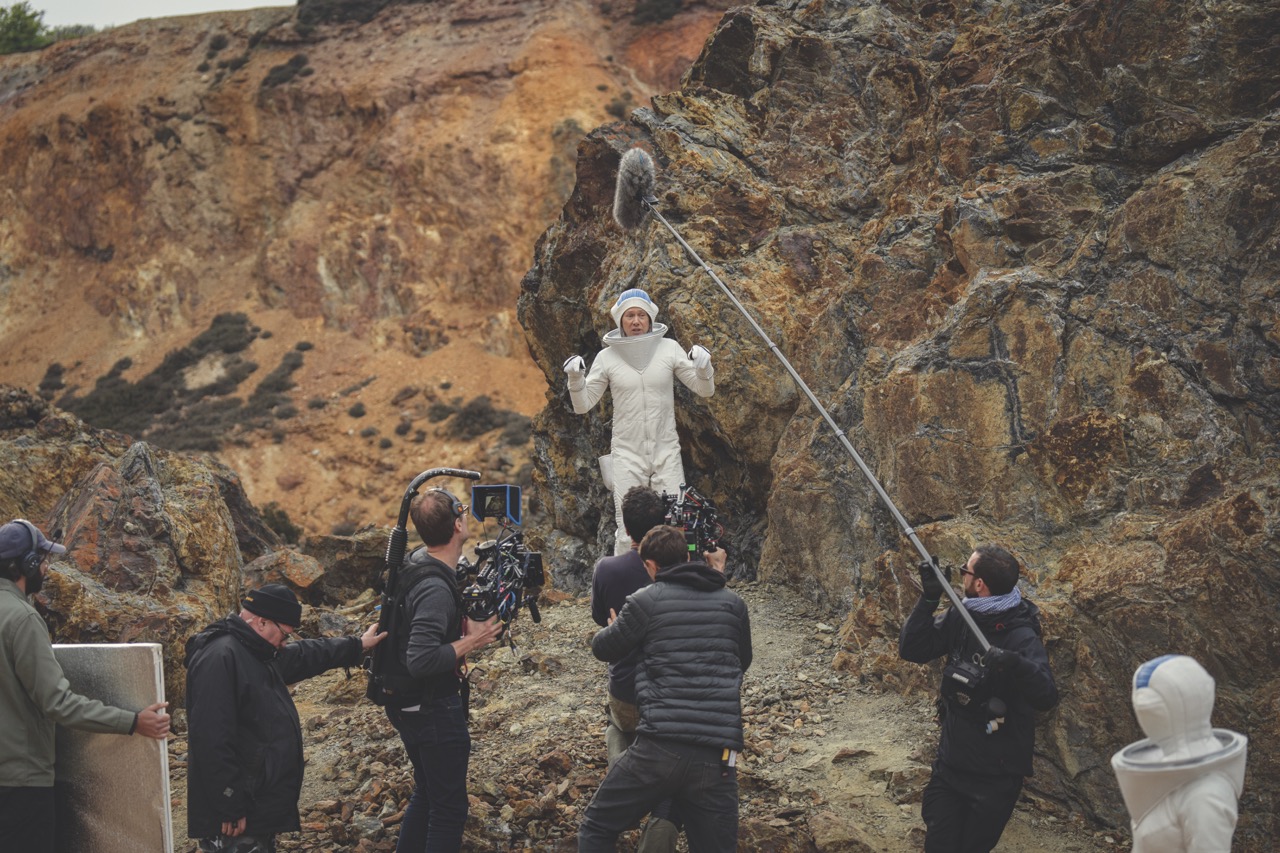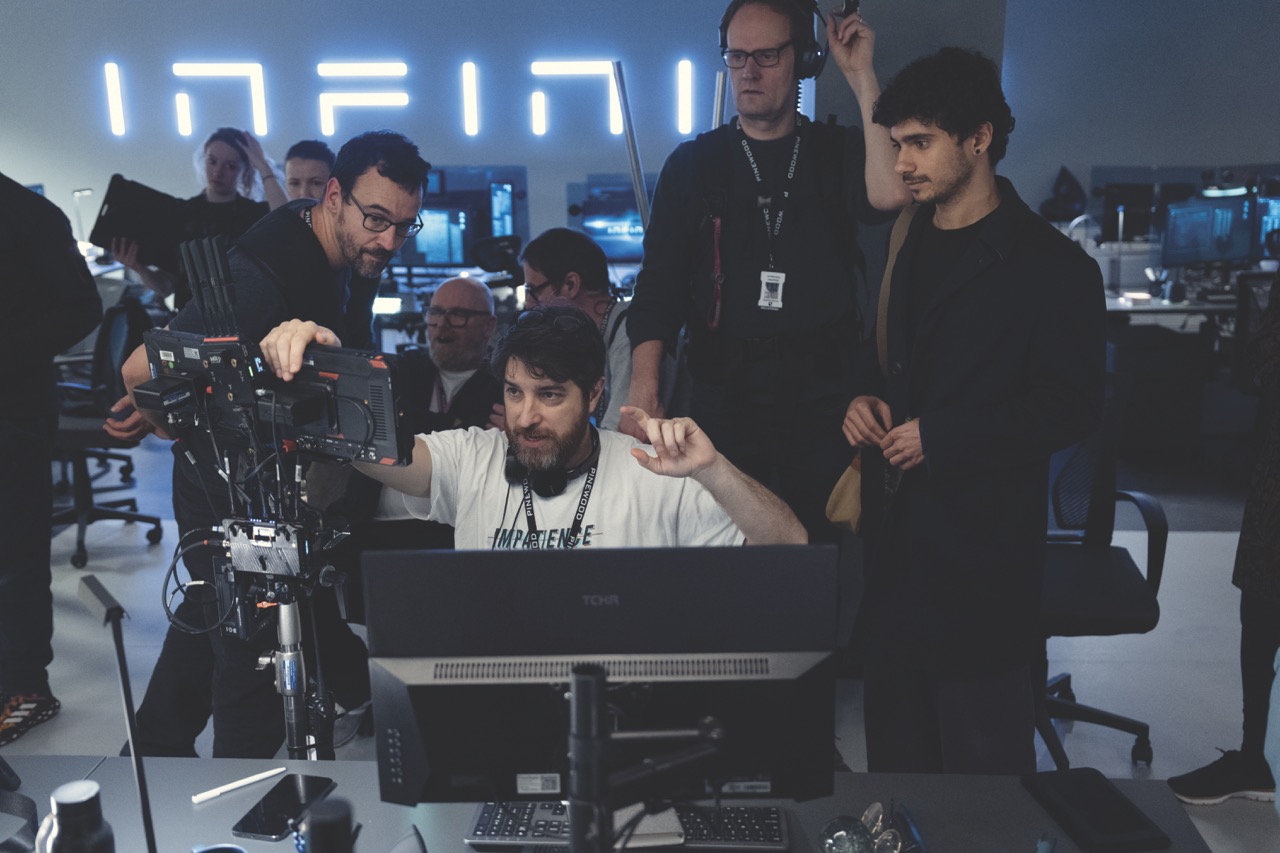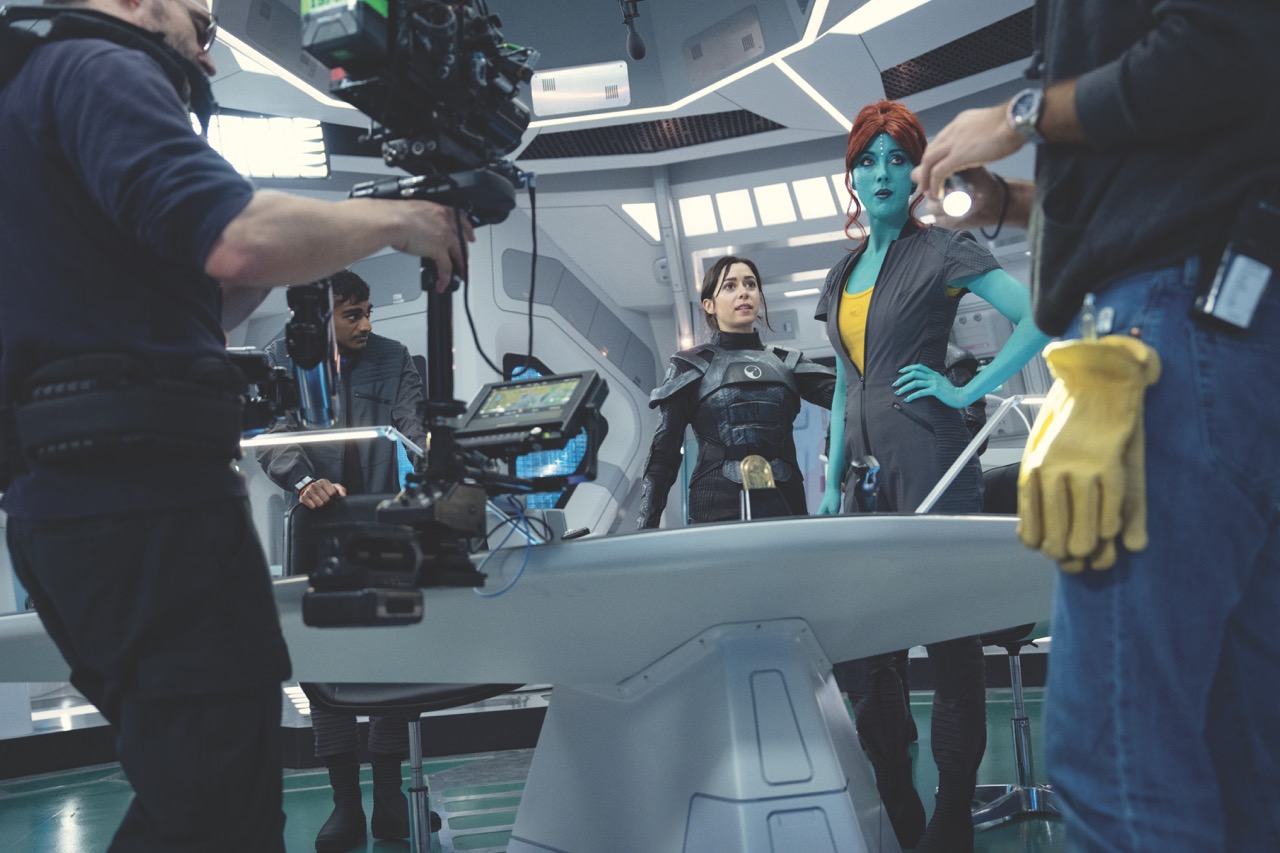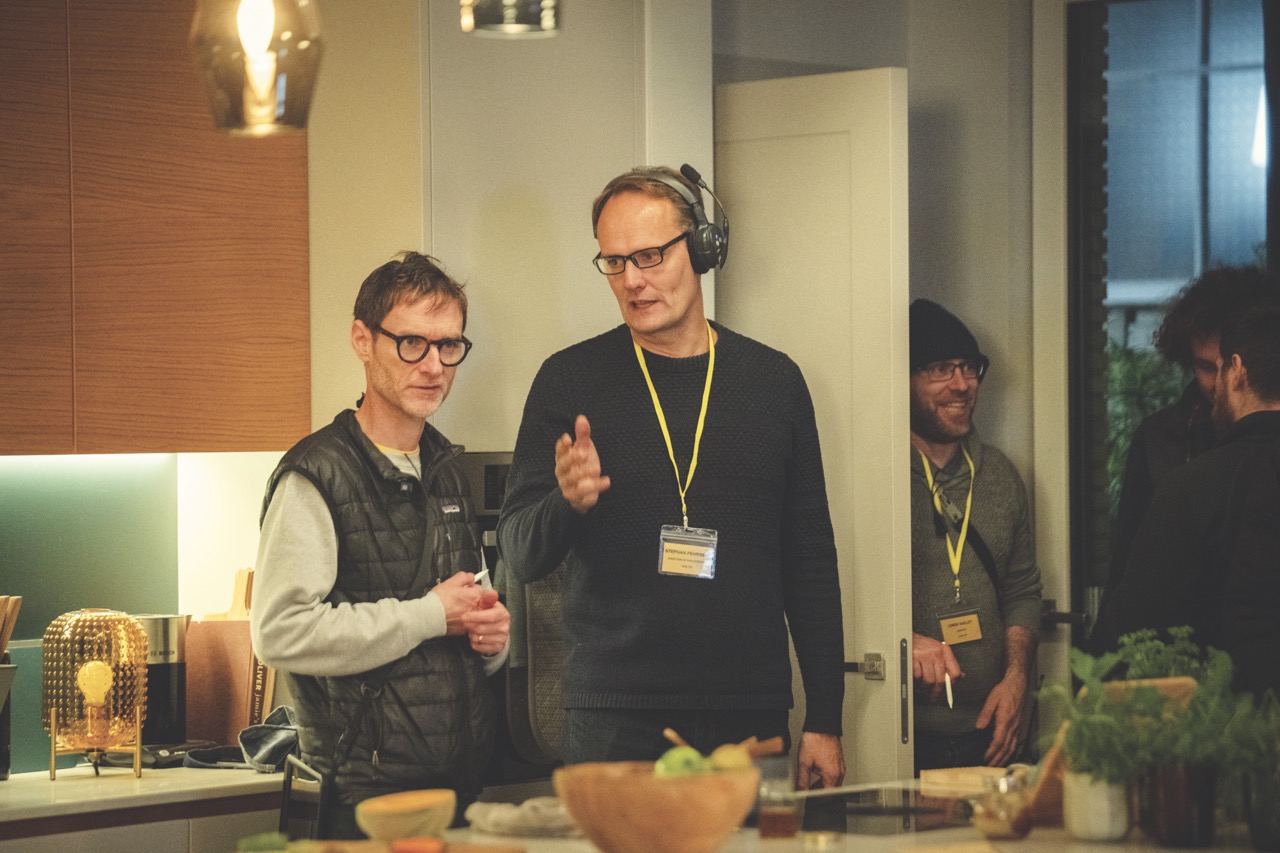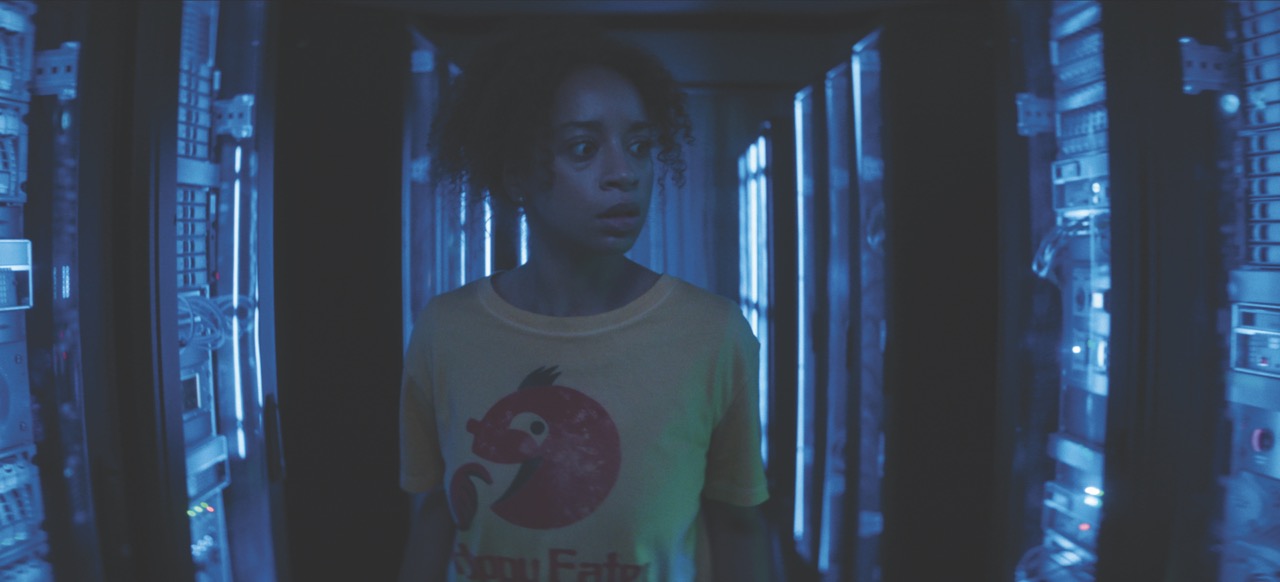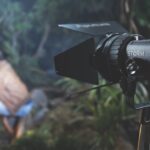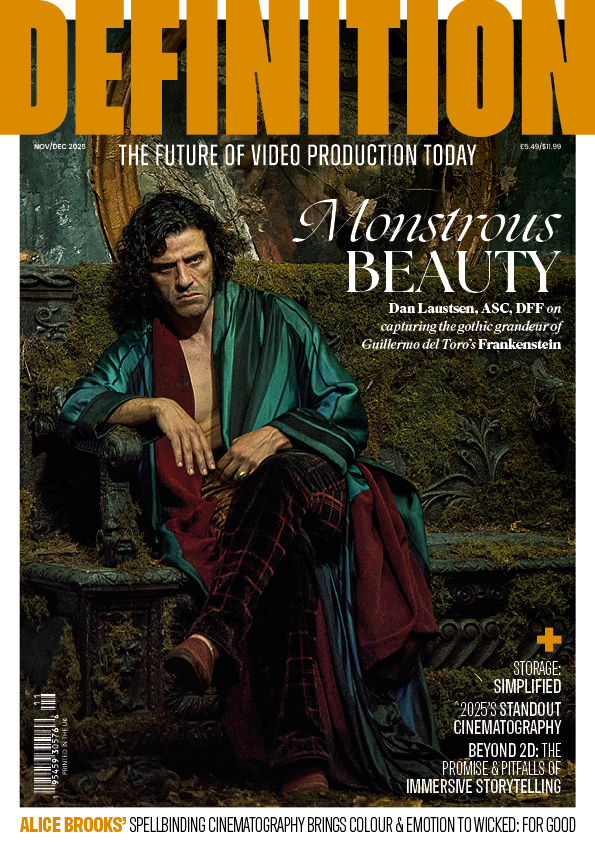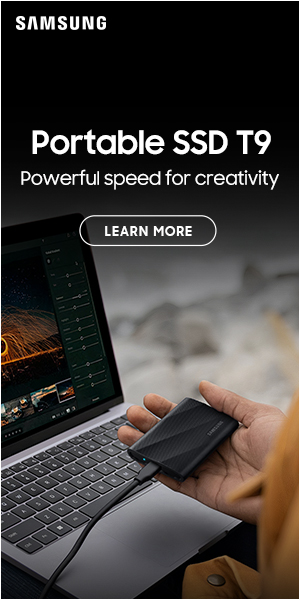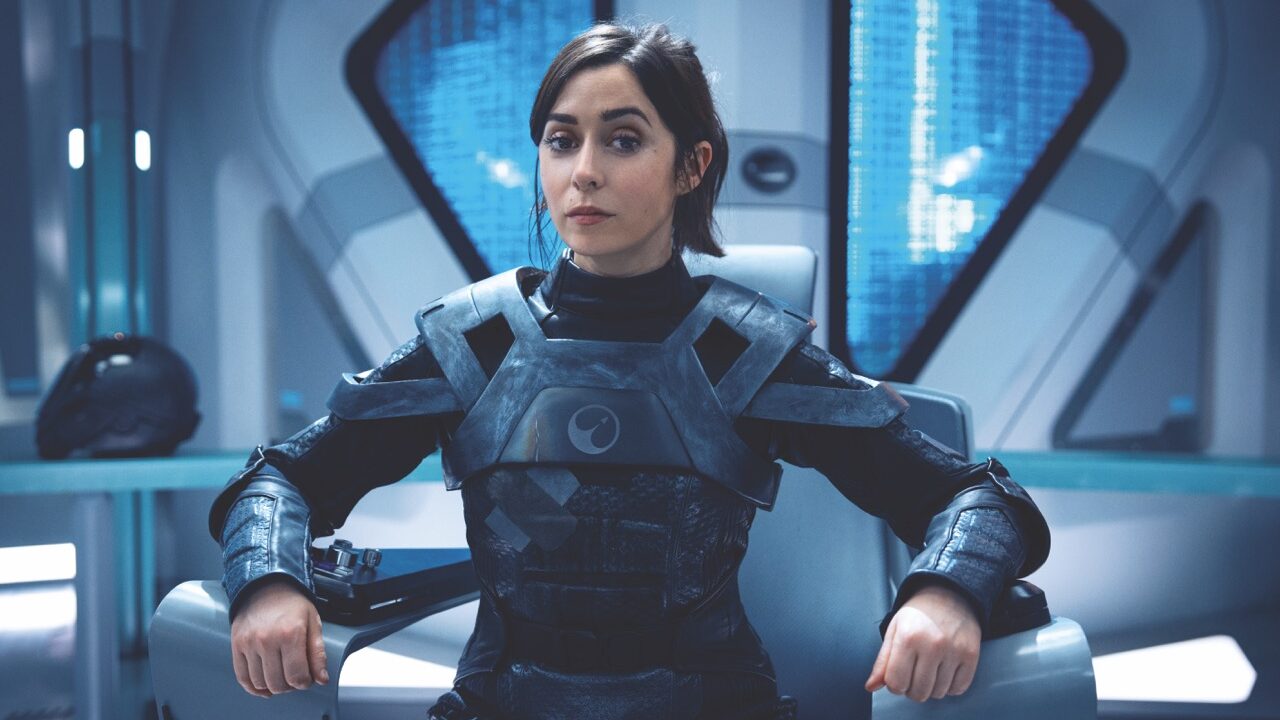
Production: Black Mirror
Posted on Jul 1, 2025 by Admin
Reflections on Black Mirror
As Charlie Brooker’s dystopian tech nightmare basks in the glory of its seventh hit season, we catch up with regular DOP Stephan Pehrsson, BSC to get the lowdown on fan favourite USS Callister and sci-fi fantasy Bête Noire
Words Nicola Foley | Images Netflix
Over the course of its 33-episode run, Black Mirror has consistently managed to rattle us with bleak visions of technology run amok. The show has become so synonymous with our fears around tech that it’s now a byword for them: call something ‘a bit black mirror’ and most people will know exactly what you’re getting at. By and large in the Black Mirror universe – and increasing Easter eggs and crossovers imply that it is indeed a single universe – technology is advancing at a pace we can’t keep up with. It infiltrates all corners of our lives and gallops out of control, with unintended (and often horrific) consequences. It has always been an unsettling watch, but in 2025 – as AI runs wild, deepfakes flood our feeds and we doomscroll ourselves to oblivion – its tech-fuelled, near-future fables are cutting closer to the bone than ever.
“We can’t run away from it; it’s our world now,” agrees Stephan Pehrsson, who’s served as DOP on iconic episodes including USS Callister (parts one and two). “Charlie is so smart, so ahead of the curve. He sees trends before anyone else does – and then manages to create this fantastic drama out of them.
“He keeps sort of managing to predict the future, and he’s got this way of pointing out to you things that were hidden before. It’s amazing the way that Black Mirror has even become part of our vocabulary. I play such a tiny part in it, but I’m excited that they keep wanting me around and asking me back.”
Pehrsson originally got the gig through Toby Haynes, a regular director on the series, who he had struck up a friendship with at film school and has continued to collaborate with since. The first episode the pair worked on together was back in 2017 and, after binging the episodes in the first three seasons ahead of the shoot, Pehrsson could tell that the pressure was on. “I saw how high the bar was and my main feeling was ‘I can’t fuck it up!’” he laughs.
They didn’t. The resulting episode, USS Callister, was a huge hit with the fandom, and so beloved by Brooker himself that it’s the only Black Mirror story ever to get the full sequel treatment.
Right from the start, something Pehrsson enjoyed most about the show was the creative freedom it affords the teams working on different episodes.
A self-described cinematography ‘chameleon’, the anthology format works perfectly for the DOP, giving him the chance to create a new visual world for every script, without worrying about the usual restrictions of a long-running series.
“It’s really the closest you’ll get to working on features – you’re telling one stand-alone story, and it doesn’t need to fit in with anything else. What Charlie and Annabel Jones – producer – and everyone else wants is for you to interpret it and make it your own: to put your own vision on Charlie’s words. That’s why they bring in different director-DOP teams, so every episode feels distinct.”
Bête Noire
The second episode in the seventh season, Bête Noire is a classic Black Mirror sci-fi romp. It centres around Maria, a product developer at a confectionery company, whose grip on reality starts slipping when an old schoolmate called Verity comes back into her life.
At first, it seems like the mysterious Verity is merely expertly gaslighting and isolating Maria, but as the plot thickens, it becomes clear that she’s relying on more than her powers of manipulation to alter Maria’s past and present.
As the episode draws on, it’s revealed that Verity has created a vast quantum computing set-up in her home that allows her to rewrite reality, remotely, at the touch of her pendant necklace.
Pehrsson, who says this is his ‘secret favourite’ episode of the whole show, particularly enjoyed figuring out how to build the anxiety and tension as Verity’s grip on Maria’s world tightens.
“We landed on using zoom lenses,” he explains, “because we wanted to give that impression of observing from a little further back. We found that zooming in on those moments when the tension rises – rather than tracking in – gave it a different feel; like the camera was pointing something out to you.”
The team chose not to focus on Verity’s pendant, which she wears throughout the episode, until the penny drops that it’s the source of her power. “We made sure the shots were wide at the beginning – but then we want you to see it, so we pan to it, revealing it to the audience. And then it all clicks.”
Mostly, though, this episode was a case of ‘playing it straight’. “We wanted to present it like an average drama, so you wouldn’t question it too much, but then towards the end we let it go handheld and vibrant as the plot goes crazy.”
The return to USS Callister
The other episode from the new season Pehrsson worked on was USS Callister: Into Infinity, a follow-up to the fan favourite that follows the employees of Callister Inc, the company behind an immersive MMOG simulated-reality game called Infinity. Pehrsson says that it wasn’t just fans who couldn’t let go of the OG episode after it aired.
“We were talking about doing a sequel almost as soon as it was going out,” he remembers. “Toby kept saying this was probably the best ‘pilot’ episode of a TV show he’d ever seen. Although it had this perfect ending, there was always a part of us thinking: it would be fun to find out what they’re getting up to next…”
In fact, they came within a whisper of creating an entire spinoff series, Pehrsson reveals. The crew were gearing up to shoot at the end of 2023, but then the SAG-AFTRA strike stopped play. When it came to rounding up the all-star cast to try again, schedules wouldn’t allow for it.
“It was a big problem because we had to get these five really famous, in-demand actors back in the same space again. It’s not something we’d had to deal with on Black Mirror before – the cast usually only have to commit to a couple of weeks, so you can get these amazing A-listers and, generally, if people are free they will do it. In this case, the schedules were so tricky we had to rethink it, so the showrunners decided to make a feature-length episode instead.”
Visually, the tone evolves from the saturated sixties vibe of the original into a slicker, more modern sci-fi look. “We moved from Shatner Star Trek to JJ Abrams Star Trek,” Pehrsson grins. “Whenever you were in the gaming world, in the spaceship, I wanted it to feel like a big Hollywood blockbuster. We had flares, smoke, lights flashing everywhere.”
They shot on the ARRI ALEXA 35 with Panavision’s T Series anamorphics. “It looks like a vintage lens, but is actually more modern. It has all that good anamorphic flair – the kind of stuff you see in big event movies,” he continues. “We weren’t allowed those the first time around. Back then, we had one opportunity on the last day to shoot with vintage glass, and we chose these Japanese Toyo lenses from the sixties – they looked like something Doc Brown would have made in Back to the Future! They were almost falling apart, and weren’t practical, but they looked amazing. This time, though, the T Series anamorphics gave us the look, but were much easier to deal with.”
Another upgrade was swapping out the green screen for an LED wall, for the view outside the spaceship window. “VFX worked out that it would actually be cheaper to display space on a volume-type screen. I was sort of against it when I first heard about it, as I thought green screen would be simpler. I worried that the parallax would look wrong, and that it would cause problems with the reflections from the glass window, but after they put it in, it made total sense.
“It was absolutely brilliant: when they travel through hyperspace, we used a video animation, so that hyperspace was actually lighting the cast. Then, when they’re in Nanette’s head, we could make the screen change to different colours, bathing them in red first so you feel like you’re behind the eyes. When she opens her eyes and we flash them white – all of that was on the video screen, with a bit of help from a 360 SkyPanel.”
It also came in handy when the crew aboard the ship are seeing the world from Nanette’s point of view. “The cast could see what was happening on the screen and react accordingly, so that worked great,” he enthuses.
The most formidable challenge was shooting the sequence involving character doubles. “This is something we see more and more of in films, but it’s still so hard – made even harder in our case by how different some of our characters looked,” he explains. The spaceship scenes required actors to perform both sides of their roles, often hours apart due to lengthy wardrobe changes. “Walton’s in a full caveman outfit that takes four hours to put on, then you have to clean all that off and put him into his spacesuit, which takes another two hours,” he says.
To execute the repeated set-ups, the team used a Technodolly – a motion- control rig that could record complex camera moves and replay them as needed. “It works like a motion-control camera, but the great thing about the tech is that you can turn everything off and let the camera move with slight inconsistencies – almost like working handheld,” says Pehrsson.
The greater challenge came in coordinating the performances across takes, with actors needing to react to their earlier performances. This meant the first pass had to be edited quickly, with the dialogue timed and cued for playback during the second. “Someone has to sit there and edit the sound, put the dialogue up when it’s supposed to be there and cut it when it’s not.” The process was demanding for everyone: “It was a long day trying to get through all the set-ups… we were ready to murder each other by the end of it,” he chuckles.
If tasked with shooting doubles again, Pehrsson says: “I would have taken a dolly and had a prep day. That was our main takeaway, that we should have had a prep day. It would have been a lot easier.”
Despite all the challenges, going back to the USS Callister was a thrill for all involved, and a memory he’ll cherish. “Day one was just so exciting,” he recalls. “It felt like a fun reunion, with old friends we hadn’t seen for seven years,” he recalls. The crew marked the occasion in style: “Someone decided we should all get uniforms,” he says, laughing. “So the entire camera team was dressed up in Star Trek outfits. On the first day, we got a picture of us all together – with me in the captain’s chair, of course.”
This article appears in the May/June 2025 issue of Definition


